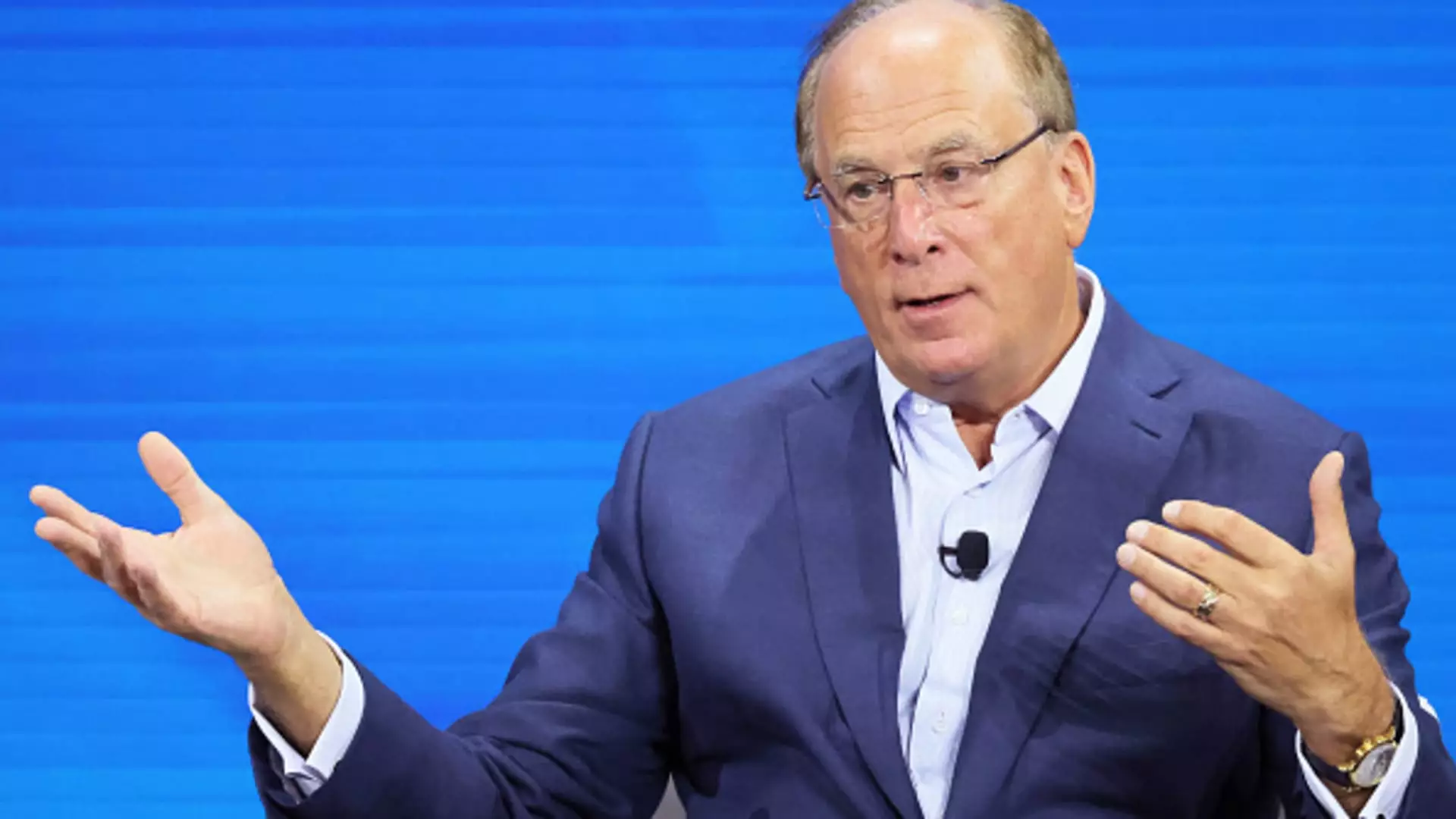In recent financial news, Jim Cramer, renowned for his investment insights, has expressed his interest in BlackRock, the largest asset management firm globally. This consideration comes on the heels of impressive third-quarter earnings results released by BlackRock, which exceeded analysts’ expectations. The firm saw its shares hit an all-time high, reflecting the strong market sentiment and investor confidence. Notably, BlackRock’s assets under management reached a staggering $11.5 trillion, attributed to a significant influx of capital as the market rebounded from previous downturns. Cramer’s move to include BlackRock in his portfolio of stocks to observe signals a notable shift within the investment community regarding this financial powerhouse.
One of the striking elements of BlackRock’s recent performance includes the company adding approximately $2 trillion in assets organically over the last five years. This monumental figure places BlackRock among the top players in the asset management sector, underscoring its dominance and strategic brilliance. BlackRock’s CEO, Larry Fink, took to CNBC to highlight the impressive organic growth while also discussing the company’s $12.5 billion acquisition of Global Infrastructure Partners. This acquisition has bolstered the firm with over $100 billion in additional assets, showing a clear commitment to expanding its portfolio amid a dynamic market environment.
The overall financial atmosphere has been quite challenging, as several major players, including Wells Fargo and Morgan Stanley, report robust earnings. The announcement of earnings by BlackRock coincides with a period of uncertainty stemming from shifting interest rates, as Federal Reserve policies significantly impact financial markets. Following a recent 50-basis-point rate cut, predictions about future cuts have become less aggressive, reflecting a cautious approach to economic stabilization. In this murky landscape, BlackRock’s resilience and operational strategy stand out, making their performance even more commendable.
Cramer’s contemplation regarding an investment in BlackRock is rooted in the company’s impressive performance metrics and strategic foresight. BlackRock’s sustained growth rate and its management strategy should not be overlooked, especially during a time when many asset managers are grappling with external pressures. Cramer pointed out that while BlackRock’s stock has gained significantly over the past month, rising more than 12%, the broader S&P 500 index managed only about a 4% increase. This stark contrast underscores BlackRock’s potential for further growth, a sentiment echoed by Cramer who acknowledged that just because the stock has risen, it doesn’t mean it’s reached its ceiling.
However, despite the promising indicators, Cramer emphasized the importance of not rushing into investment decisions, reflecting a prudent approach to managing investments. He noted that while he is keenly interested in BlackRock, he has been preoccupied with potential investments in Wells Fargo and Morgan Stanley, which are also performing well. Cramer’s philosophy of taking measured steps in the investment landscape resonates in the high-stakes environments where rapid shifts can often lead to adverse outcomes.
BlackRock stands at a pivotal point within the investment sphere, marked by impressive performance, strategic acquisitions, and robust asset growth. Jim Cramer’s exploration into BlackRock is not just a fleeting thought; it is backed by substantial data reflecting the firm’s status. As the broader financial sector continues to adjust to evolving economic conditions, BlackRock’s strength in managing vast assets while remaining adaptable could position it as a cornerstone for Cramer’s investment strategy. As always, however, investors must navigate these waters carefully, weighing potential risks against the considerable opportunities that a firm like BlackRock can provide in a changing economic landscape.

